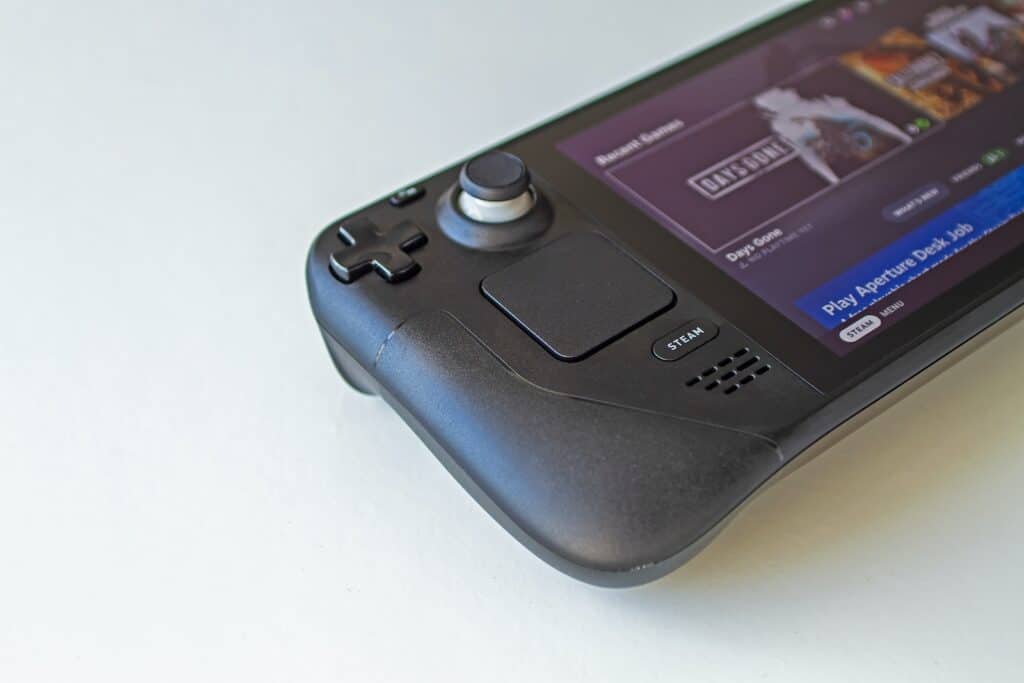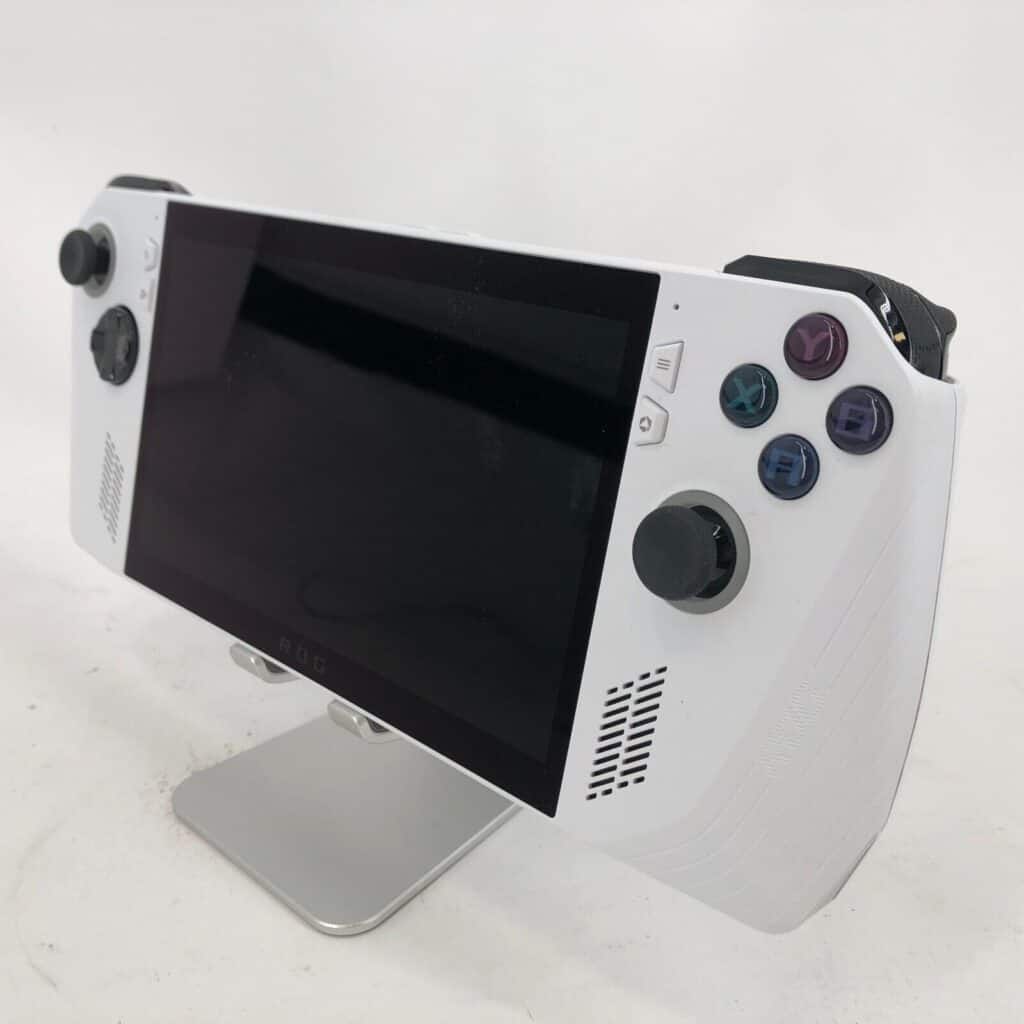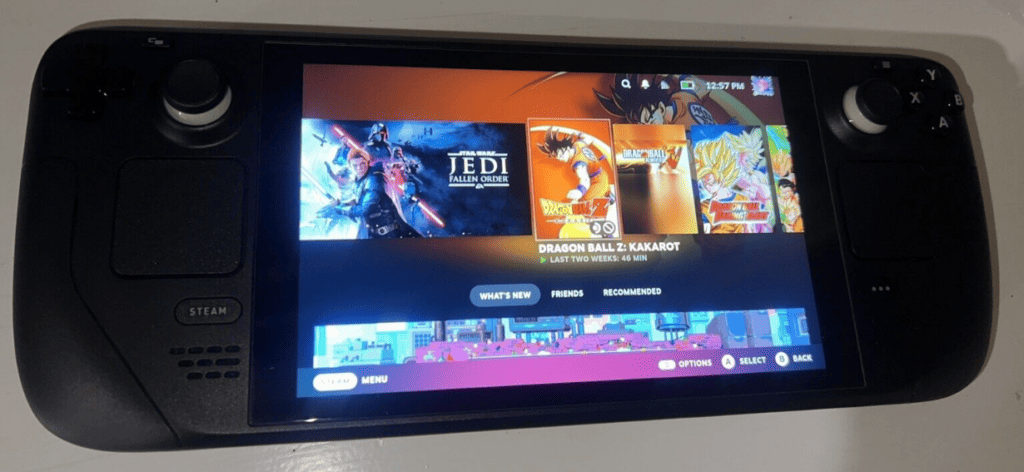
Asus ROG Ally vs. Steam Deck: A Comprehensive Comparison
The gaming world is constantly evolving, and the rise of handheld gaming PCs has been a game-changer. Two major contenders in this space are the Asus ROG Ally and the Steam Deck. Both devices offer unique features and capabilities, making them attractive to different types of gamers. In this article, we’ll compare these two devices in detail, helping you decide which one might be the right choice for your gaming needs.
Asus ROG Ally vs. Steam Deck
Here’s a table comparing the Asus ROG Ally and Steam Deck:
| Feature | Asus ROG Ally | Steam Deck |
|---|---|---|
| Operating System | Windows 11 | SteamOS 3.0 (Linux-based) |
| CPU | AMD Ryzen 7 6800U | AMD Zen 2 4c/8t, 2.4-3.5GHz |
| GPU | AMD Radeon 680M | AMD RDNA 2, 8 CUs, 1.0-1.6GHz |
| RAM | 16GB LPDDR5-6400 | 16GB LPDDR5 |
| Storage | 512GB NVMe SSD, up to 2TB | 64GB eMMC, 256GB NVMe SSD, 512GB NVMe SSD |
| Display | 1080p IPS LCD, 120Hz refresh rate | 7-inch LCD touchscreen, 1280 x 800 resolution, 60Hz refresh rate |
| Battery | 45 Wh | 40 Wh |
| Dimensions | 11.2 x 4.37 x 1.9 inches | 11.7 x 4.6 x 1.9 inches |
| Weight | 668 grams | 669 grams |
| Price | Starting at $1,099 | Starting at $399 |
Key Differences:
- Performance: The ROG Ally generally offers stronger performance due to its more powerful CPU and GPU.
- Operating System: The ROG Ally runs Windows 11, providing wider compatibility with games and software. The Steam Deck uses a custom Linux-based OS optimized for gaming, but may have some compatibility limitations.
- Display: The ROG Ally has a higher resolution and refresh rate display, offering a smoother and more visually immersive experience.
- Battery Life: The Steam Deck typically has slightly longer battery life in real-world usage.
- Price: The ROG Ally is significantly more expensive than the Steam Deck.

Key Takeaways
- Asus ROG Ally offers superior raw performance with its AMD Z1 Series processors.
- Steam Deck is known for its affordability and robust game library through SteamOS.
- Both devices have their unique strengths and weaknesses, catering to different gaming preferences.
Design and Build Quality
Asus ROG Ally
- Sleek and modern design.
- Lightweight and ergonomic for comfortable gaming sessions.
Steam Deck
- Bulkier build, but with a sturdy and durable design.
- Quality thumbsticks and buttons for a premium feel.
Both devices have their merits in design, with the ROG Ally scoring points for its portability and the Steam Deck for its robust build.
Hardware Specifications
When it comes to hardware, both devices pack a punch, but in different ways.
Processor
- Asus ROG Ally: Equipped with AMD’s Z1 Series processors, offering up to 8.6 TFLOPs of performance.
- Steam Deck: Runs on a custom APU with up to 1.6 TFLOPs.
RAM and Storage
- Both devices come with 16GB of LPDDR5 memory.
- Storage options vary, with the ROG Ally offering up to 512GB and the Steam Deck up to 1TB.
Display
- The ROG Ally boasts a higher resolution screen, making it suitable for gamers who prioritize visual quality.
- The Steam Deck’s display is robust but offers lower resolution compared to the ROG Ally.
 Asus ROG Ally
Asus ROG Ally
Performance Analysis
The Asus ROG Ally generally outperforms the Steam Deck in raw performance metrics. However, the Steam Deck holds its own, offering stable and reliable gaming experiences.
Gaming Performance
- The ROG Ally is capable of running demanding games at medium settings while maintaining close to 30 fps.
- The Steam Deck, while less powerful, still delivers a smooth gaming experience for most titles.
Benchmark Results
- In benchmark tests, the ROG Ally often comes out ahead, especially in higher resolution settings.
Thermal Performance
- Both devices manage heat effectively, though the ROG Ally’s higher performance can lead to increased heat output.
Operating System and Software
The choice between these two devices also comes down to the operating system and software ecosystem.
Asus ROG Ally
- Runs on Windows 11, offering a familiar desktop experience.
- Provides access to a wide range of games and applications outside the Steam library.
Steam Deck
- Uses Valve’s custom SteamOS, designed specifically for gaming.
- Tightly integrated with Steam, offering a vast library of games.

User Interface
- The ROG Ally, while powerful, feels more like a handheld laptop than a dedicated gaming console.
- The Steam Deck’s interface is more streamlined for gaming, though it comes with its own set of bugs and quirks.
Price and Value for Money
In terms of pricing, the Steam Deck is generally more affordable than the ROG Ally. However, the ROG Ally offers better performance, which might justify its higher price tag for some users.
Asus ROG Ally
- Higher price point, but offers superior performance and a better screen.
Steam Deck
- More budget-friendly, making it accessible to a wider range of gamers.
Pros and Cons
Asus ROG Ally
- Pros: Superior performance, high-resolution screen, Windows 11 OS.
- Cons: Higher price, feels more like a handheld laptop.
Steam Deck
- Pros: Affordable, robust game library, streamlined gaming interface.
- Cons: Lower performance, some issues with SteamOS.
Battery Life and Charging
The longevity of a gaming session while on the move is crucial. Here’s how our contenders fare:
Asus ROG Ally
- Battery Capacity: Offers around 2 hours of gameplay for demanding AAA titles.
- Charging: Supports fast charging, but battery life diminishes quickly in Turbo mode.
Steam Deck
- Battery Capacity: Can stretch to about 7 hours for less demanding games.
- Charging: Less rapid than the ROG Ally but offers longer gaming sessions.
Battery Life Comparison
| Device | Battery Life (AAA Games) | Battery Life (Light Use) |
|---|---|---|
| ROG Ally | ~2 hours | ~4-5 hours |
| Steam Deck | ~2-7 hours | ~7-8 hours |
Price and Value for Money
Balancing cost and features is key. Here’s a quick recap:
Asus ROG Ally
- Higher price, but offers more power and a better display.
Steam Deck
- More affordable, with a vast game library and a user-friendly interface.
Price Comparison
| Device | Base Price | High-End Model Price |
|---|---|---|
| ROG Ally | $600 | $700 |
| Steam Deck | $400 | $650 |
Pros and Cons
Weighing the advantages and disadvantages can help in making an informed decision.
Asus ROG Ally
- Pros: High performance, excellent display, versatile Windows 11 OS.
- Cons: Higher price, less portable, shorter battery life.
Steam Deck
- Pros: Affordable, vast game library, longer battery life.
- Cons: Lower performance, bulkier design, some software bugs.
FAQs
Is the Asus ROG Ally worth the higher price compared to the Steam Deck?
It depends on your priorities. If performance and display quality are paramount, the ROG Ally is worth considering. However, for budget-conscious gamers, the Steam Deck offers great value.
Can the Steam Deck run all PC games?
While the Steam Deck is powerful, some PC games may not be optimized for its hardware and SteamOS. Compatibility should be checked on a game-by-game basis.
How user-friendly is the Windows 11 OS on the Asus ROG Ally for gaming?
Windows 11 provides a familiar desktop experience and broad game compatibility. However, it may not be as streamlined for gaming as the Steam Deck’s custom SteamOS.
External and Internal Links
To further enhance your understanding, here are some useful resources:
Internal Links from Gadgetmates.com
- Top 10 Portable Gaming Consoles for 2024 – A comprehensive list that includes both the ROG Ally and the Steam Deck.
- Steam Deck GPU Equivalent – An analysis of the Steam Deck’s GPU performance.
- Top 10 Gaming Consoles for 2024 – A guide that offers insights into the latest gaming consoles, including handheld devices.
YouTube Videos
- Steam Deck OLED vs Asus ROG Ally: The Ultimate Gaming Battle
- Steam Deck VS ASUS ROG Ally
- Asus ROG Ally vs Steam Deck: Which handheld wins?
In conclusion, both the Asus ROG Ally and the Steam Deck have their unique selling points and drawbacks. Your choice will depend on what aspects of handheld gaming are most important to you – be it performance, price, battery life, or game library. With this comprehensive comparison, you’re now equipped to make an informed decision that aligns with your gaming preferences and lifestyle.
Conclusion
Both the Asus ROG Ally and the Steam Deck have their strengths and cater to different gaming needs. The ROG Ally is ideal for gamers who want the best performance and are willing to pay a premium. The Steam Deck, on the other hand, is perfect for those who want an affordable, all-in-one gaming solution.


